
01 Jan
Frontier Dynamics on the Molecular Mechanism of Ginsenoside Rh2 Against Tumor

Introduction
Ginsenoside Rh2, one protopanaxadiol (PPD)-type rare ginsenoside in Panax ginseng, is uncovered to possibly have broad-spectrum pharmacological activity in diversified tumors. It is utilized as an adjuvant drug for preoperative neoadjuvant chemotherapy, postoperative adjuvant chemotherapy, and rescue treatment of advanced cancer, which has been a research hotspot in recent years.
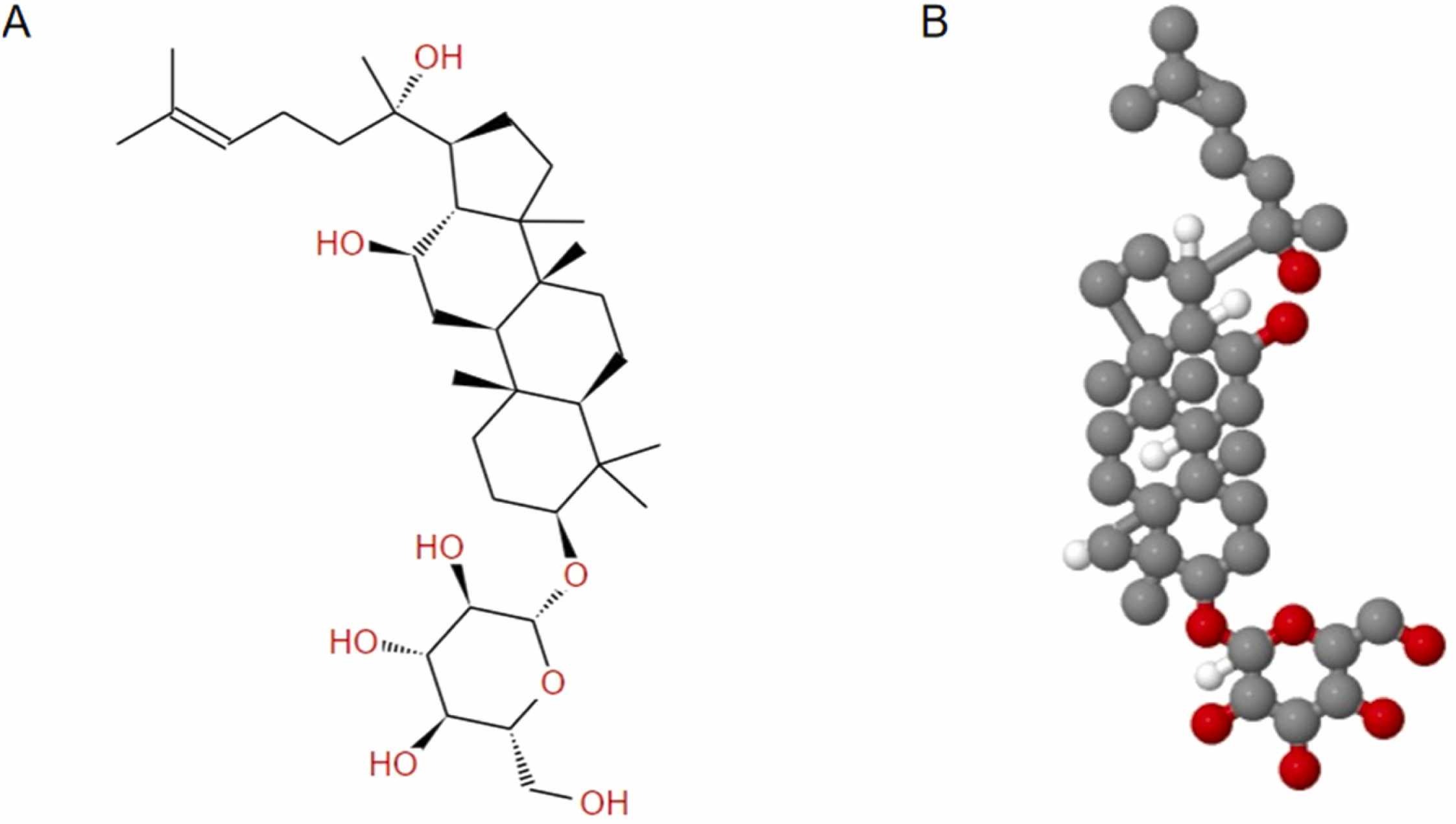

Current states on cancer therapies
Cancer has emerged as the second largest cause for death across the world, with approximately 9.6 million cancer-related deaths in 2018, in accordance with the statistical report by World Health Organization (WHO). Radiotherapy, chemotherapy and surgery are the preferred option for cancer, whose efficacy is however limited by the tumor relapse and drug resistance, requiring a patch such as adjuvant drugs to fix the bug.
For anticancer treatment, over 60% of the approved and pre-new drug application candidates are natural products or synthetic molecules based upon natural product molecular skeletons. Strikingly, ginsenosides act as a promising therapeutic target by virtue of its pharmacological activities such as immune adjustment, anti-tumor, anti-oxidation, and protection of the heart and cerebral vessels.
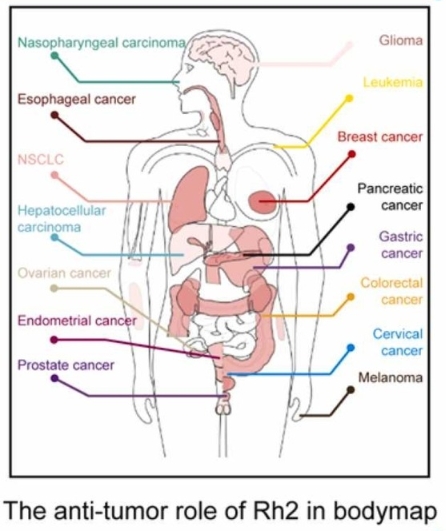
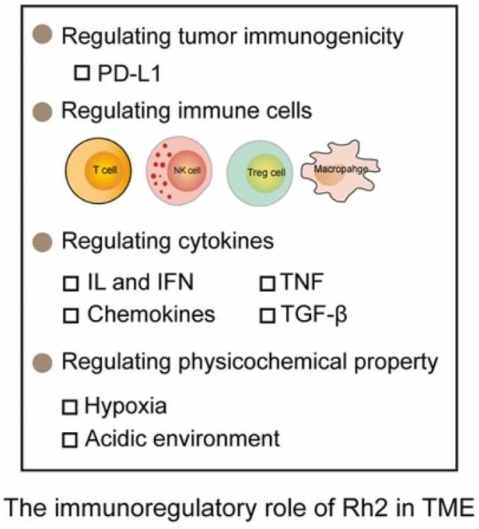
For anticancer treatment, over 60% of the approved and pre-new drug application candidates are natural products or synthetic molecules based upon natural product molecular skeletons. Strikingly, ginsenosides act as a promising therapeutic target by virtue of its pharmacological activities such as immune adjustment, anti-tumor, anti-oxidation, and protection of the heart and cerebral vessels.


20(S) ginsenoside Rh2 vs. 20(R) ginsenoside Rh2
There are two stereoisomeric forms of ginsenoside Rh2, namely 20(S) ginsenoside Rh2 and 20(R) ginsenoside Rh2. Relative to the (20R) ginsenoside Rh2, (20S) ginsenoside Rh2 has higher cytotoxic activity towards cancer cells. In a previously reported study, the half maximal inhibitory concentration values of 20(S) ginsenoside Rh2 and 20(R) ginsenoside Rh2 in A549 cells are 45.7 and 53.6 µM, respectively.
The underlying mechanisms of ginsenoside Rh2 against tumor
Mechanically, the anti-tumor effects of ginsenoside Rh2 are realized by enhancing the body’s immune activity to regulate microenvironment, inhibiting differentiation, angiogenesis, proliferation, invasion, and metastasis of tumor cells, inducing the apoptosis, cell cycle arrest, autophagy, superoxide and reactive oxygen species, and reversing the drug resistance via regulating a series of important tumor-related signaling pathway.
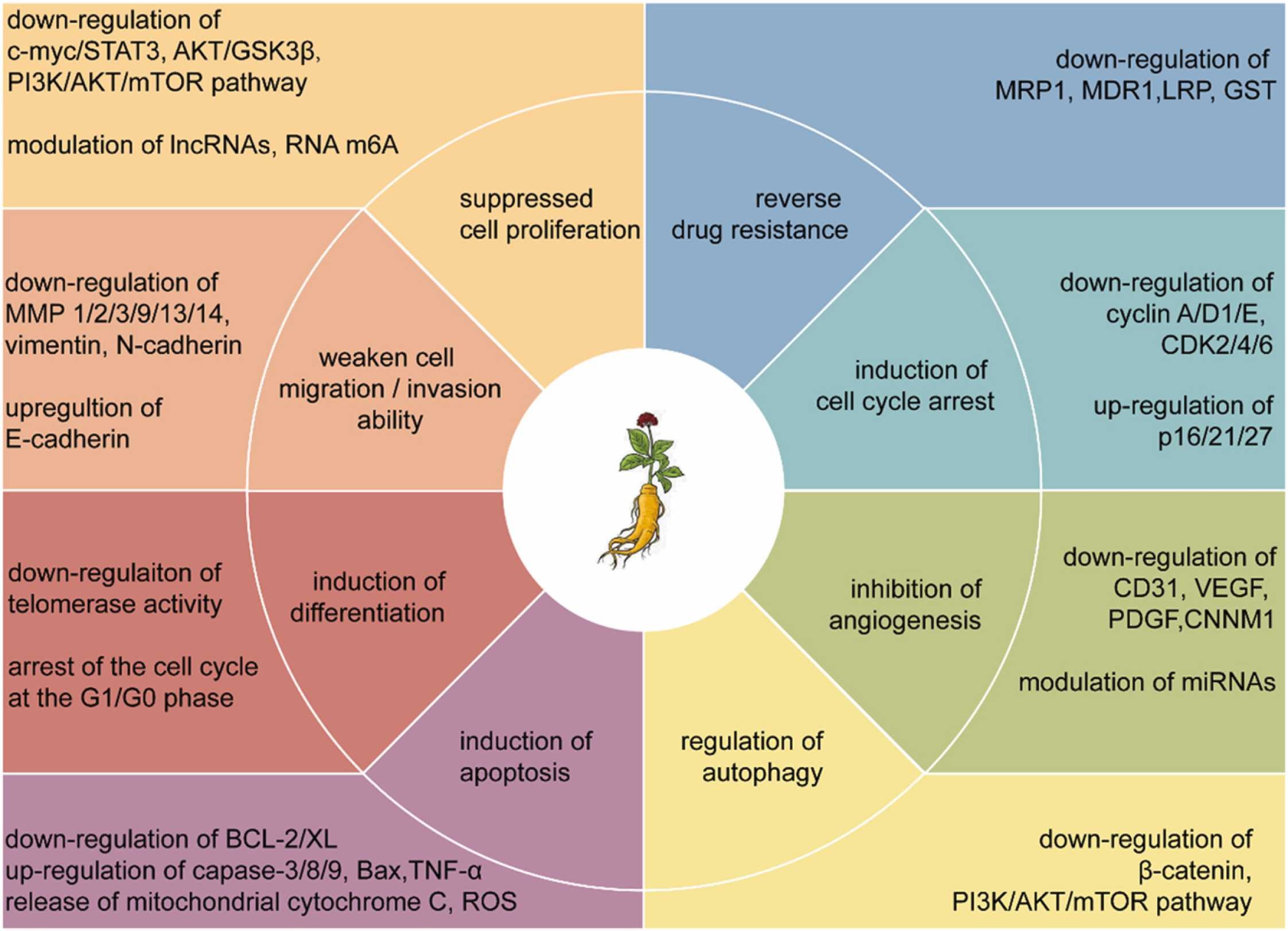
For instance, ginsenoside Rh2 can activate CD4+ and CD8a+ T lymphocytes, promote their invasion, and enhance the killing effect of lymphocytes on B16-F10 melanoma cells in a concentration-dependent manner. Besides, the number of tumor cells in the G0/G1 phase is increased significantly post treatment with ginsenoside Rh2 and 5-FU, by which the expansion and migration of tumor cells are effectively hampered. Additionally, the ginsenoside Rh2 downregulates the levels of drug-resistance-related genes (eg. MRP1, MDR1, LRP and GST), making colorectal cancer cells more sensitive to 5-FU.

For instance, ginsenoside Rh2 can activate CD4+ and CD8a+ T lymphocytes, promote their invasion, and enhance the killing effect of lymphocytes on B16-F10 melanoma cells in a concentration-dependent manner. Besides, the number of tumor cells in the G0/G1 phase is increased significantly post treatment with ginsenoside Rh2 and 5-FU, by which the expansion and migration of tumor cells are effectively hampered. Additionally, the ginsenoside Rh2 downregulates the levels of drug-resistance-related genes (eg. MRP1, MDR1, LRP and GST), making colorectal cancer cells more sensitive to 5-FU.
Conclusion
Ginsenoside Rh2 plays multifunctional roles in both tumor treatment and tumor microenvironment immunomodulation, which may become a promising choice of medication for patients with tumors in the future.
Reference
[1] Xiaodan S, Ying C. Role of ginsenoside Rh2 in tumor therapy and tumor microenvironment immunomodulation. Biomed Pharmacother. 2022;156:113912. doi:10.1016/j.biopha.2022.113912
[2] Yang L, Chen JJ, Sheng-Xian Teo B, Zhang J, Jiang M. Research Progress on the Antitumor Molecular Mechanism of Ginsenoside Rh2. Am J Chin Med. Published online January 31, 2024. doi:10.1142/S0192415X24500095
[2] Yang L, Chen JJ, Sheng-Xian Teo B, Zhang J, Jiang M. Research Progress on the Antitumor Molecular Mechanism of Ginsenoside Rh2. Am J Chin Med. Published online January 31, 2024. doi:10.1142/S0192415X24500095
BONTAC Ginsenosides
BONTAC has been dedicated to the R&D, manufacture and sale of raw materials for coenzyme and natural products since 2012, with self-owned factories, over 170 global patents as well as strong R&D team. BONTAC has rich R&D experience and advanced technology in the biosynthesis of rare ginsenosides Rh2/Rg3, with pure raw materials, higher conversion rate and higher content (up to 99%). One-stop service for customized product solution is available in BONTAC. With unique Bonzyme enzymatic synthesis technology, both S-type and R-type isomers can be accurately synthesized here, with stronger activity and precise targeting action. Our products are subjected to strict third-party self-inspection, which are worth of trustworthy.
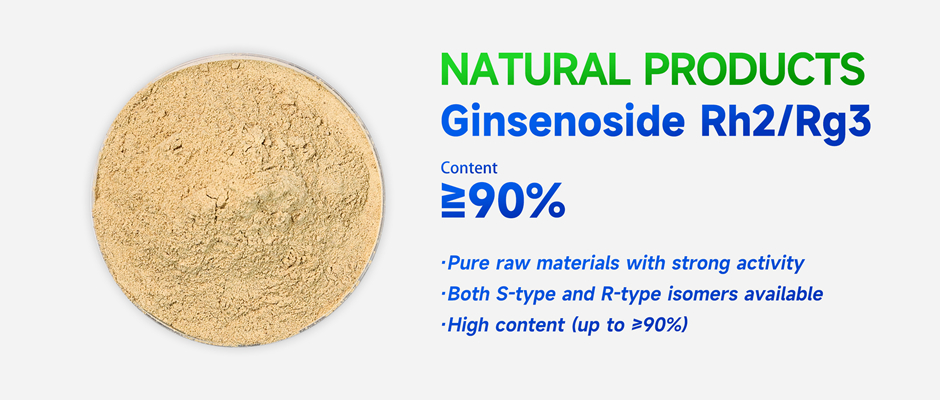

Disclaimer
This article is based on the reference in the academic journal. The relevant information is provided for sharing and learning purposes only, and does not represent any medical advice purposes. If there is any infringement, please contact the author for deletion. The views expressed in this article do not represent the position of BONTAC. BONTAC holds no responsibility for any claims, damages, losses, expenses, costs or liabilities resulting or arising directly or indirectly from your reliance on the information and material on this website.
